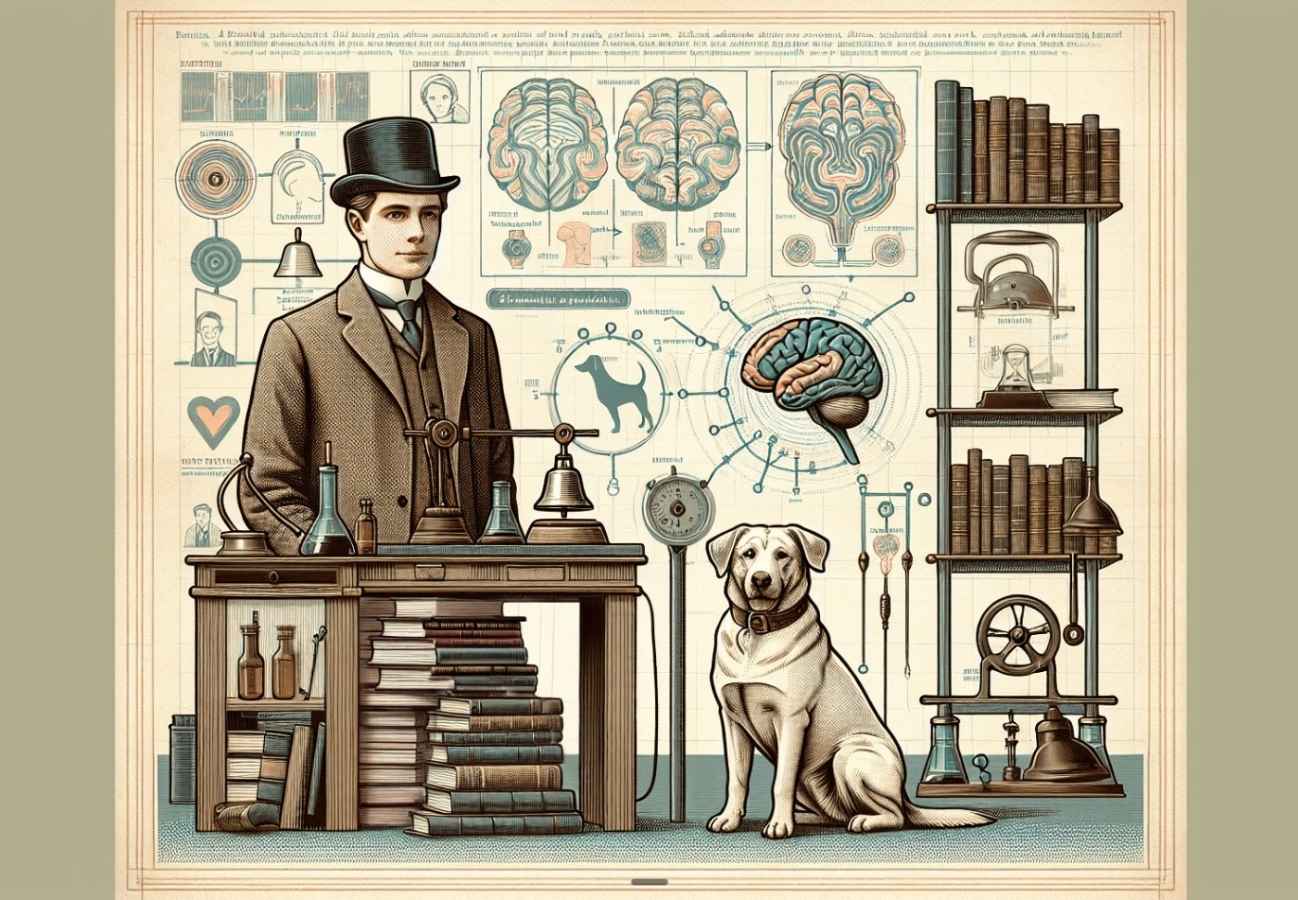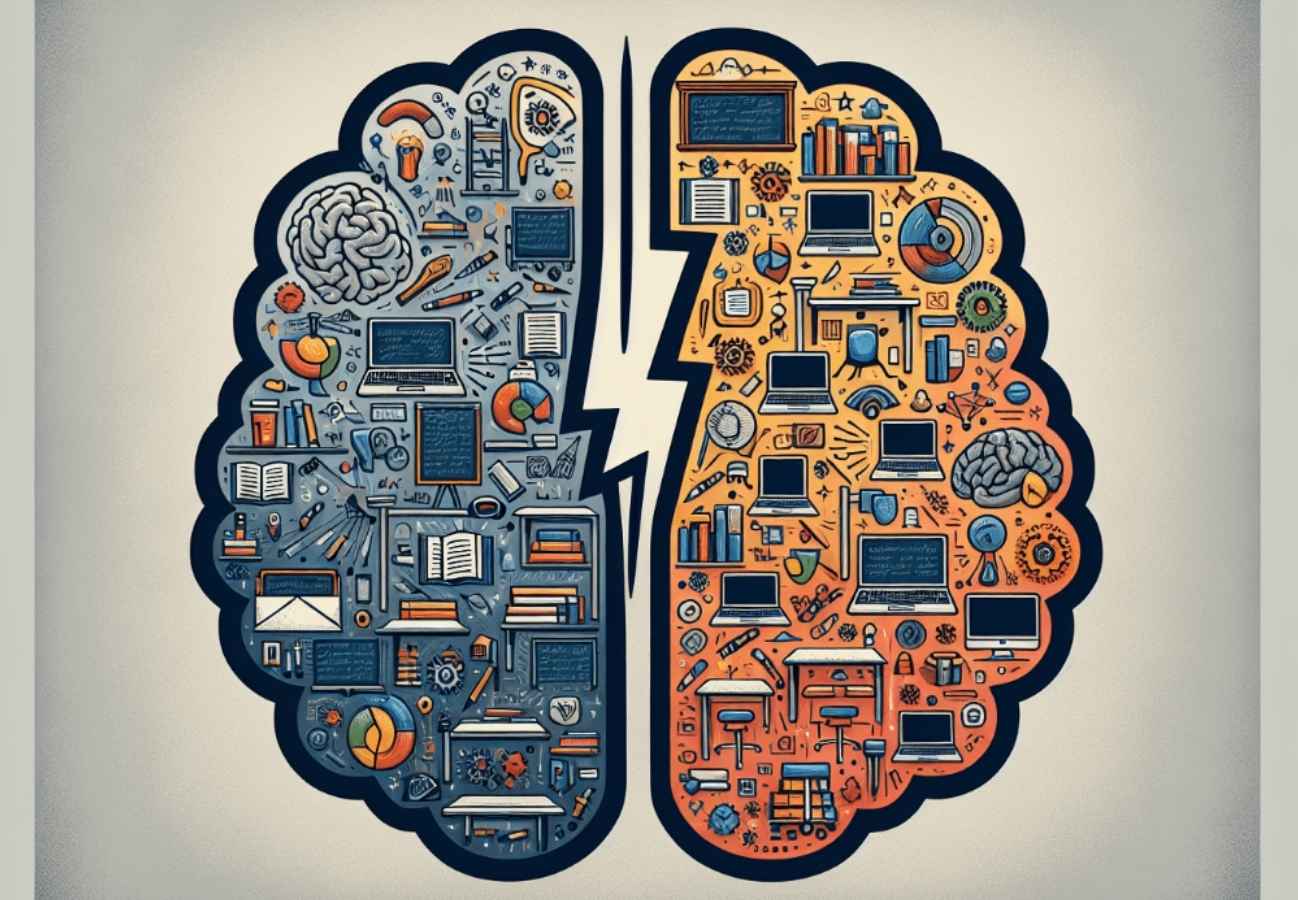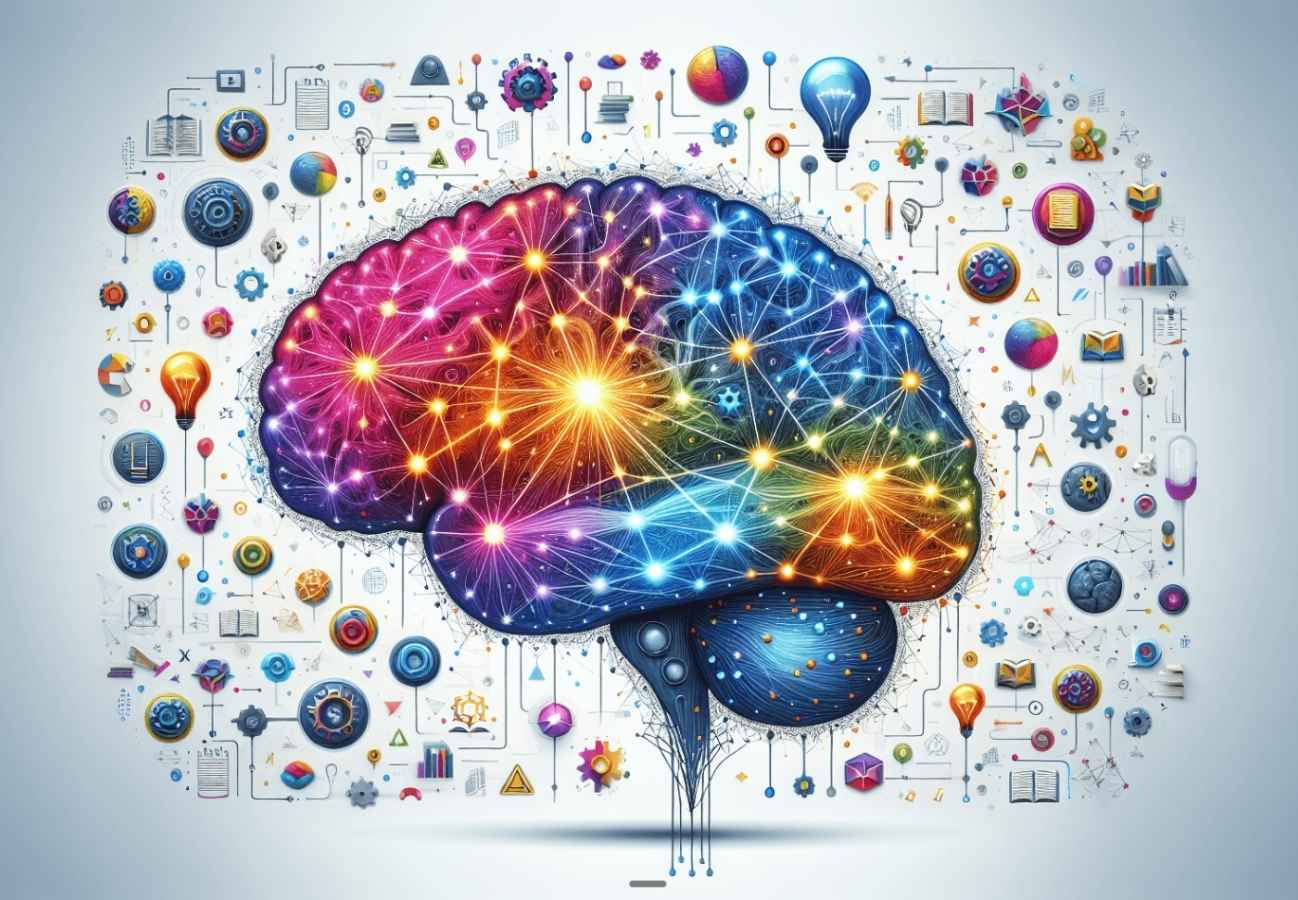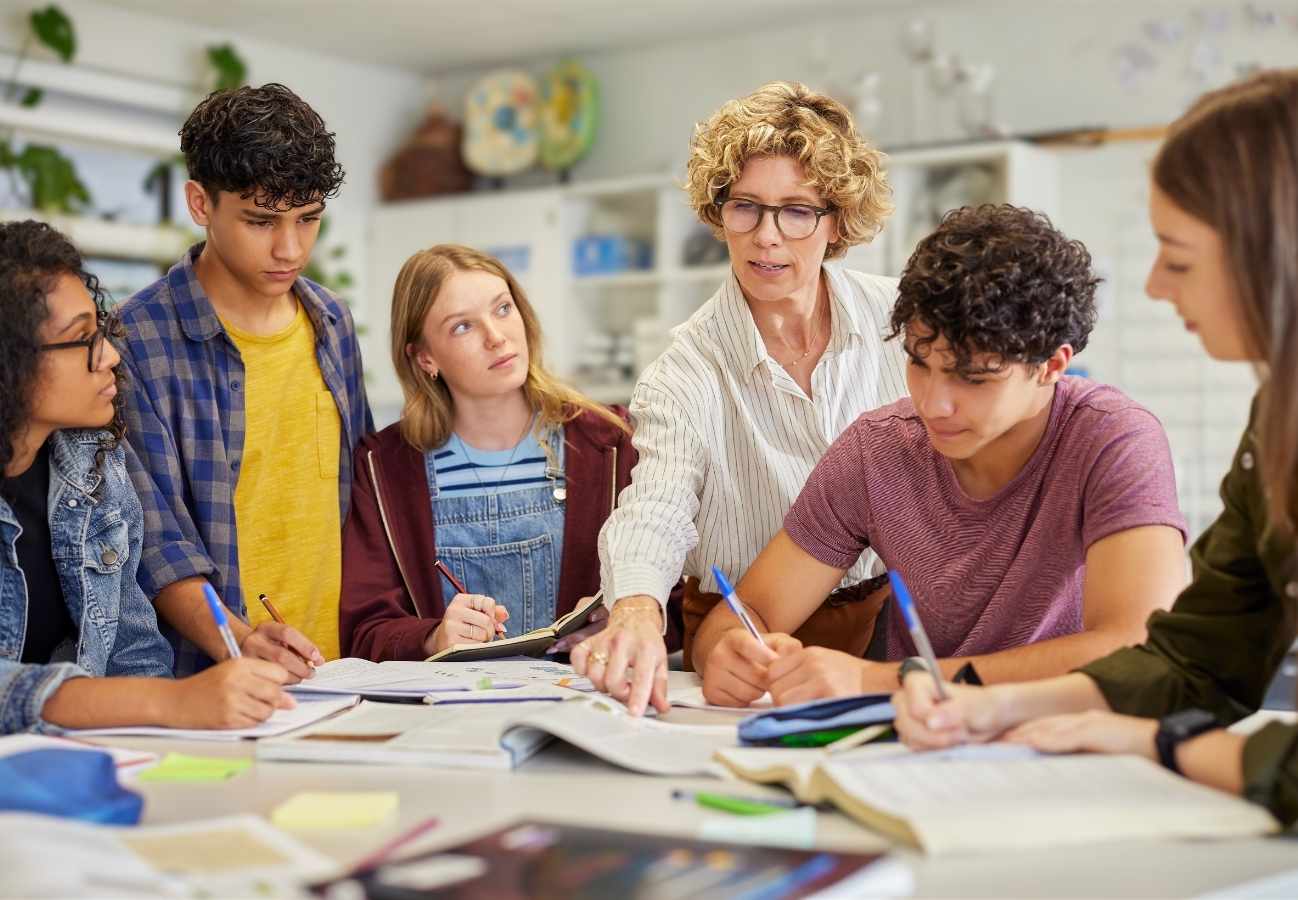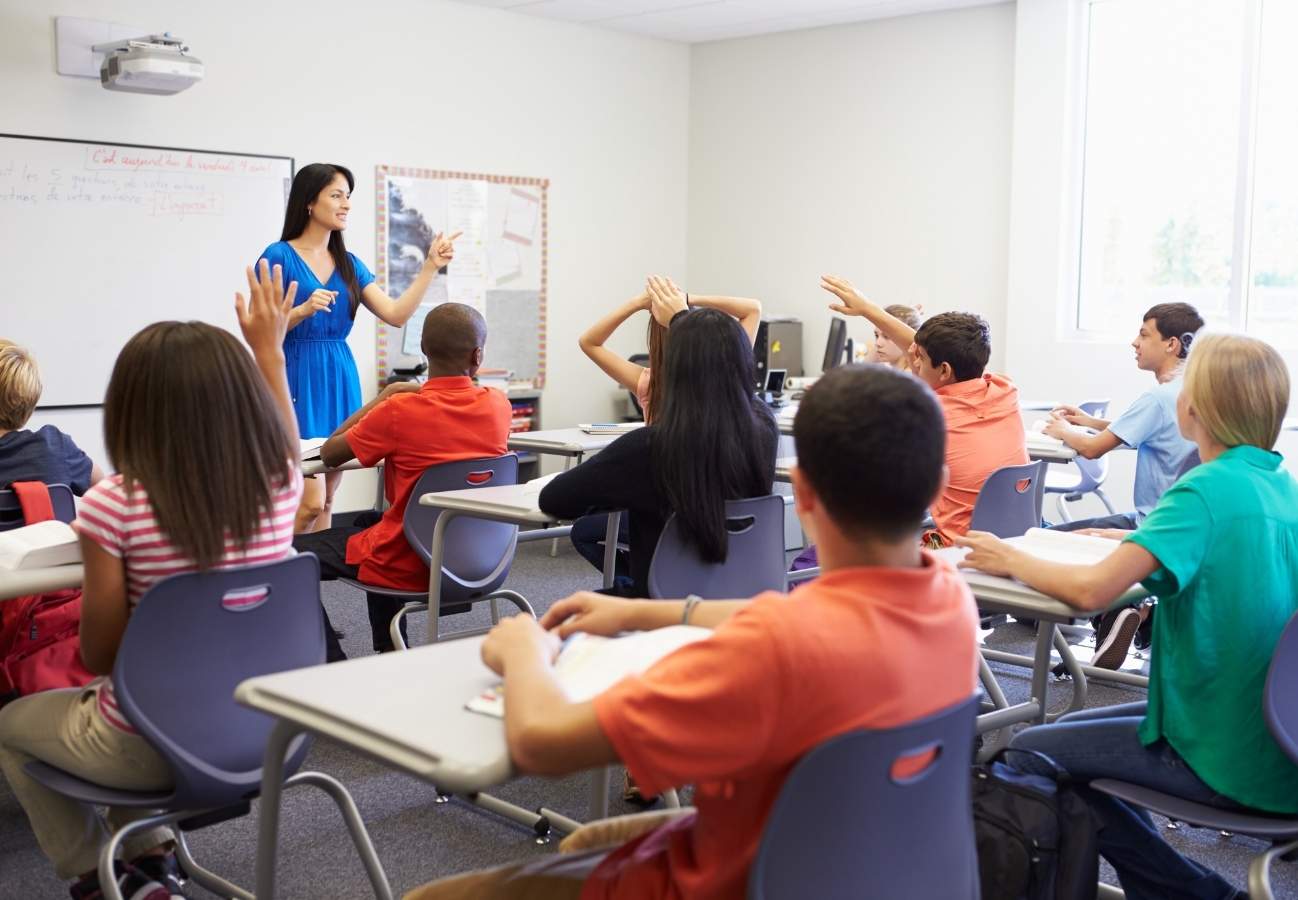Ivan Pavlov's work changed how we understand learning. While studying digestion in dogs, he noticed something unexpected: dogs began salivating before food appeared, simply when they heard footsteps or saw lab coats.
This observation led to a discovery that continues shaping education today.
What Is Classical Conditioning?
Classical conditioning is a learning process where neutral stimuli become triggers for automatic responses through repeated pairing with meaningful stimuli.
Pavlov discovered that when a neutral stimulus (like a bell) consistently appears alongside something that naturally produces a response (like food causing salivation), the neutral stimulus eventually triggers the response on its own.
This isn't just about dogs and bells. Classical conditioning explains how we form automatic emotional and physical responses to environmental cues. It's why certain smells trigger memories, why students feel anxious when entering math class, or why hearing a specific song creates instant mood shifts.
The process is fundamental to learning. Our brains constantly create associations between stimuli and responses, often without conscious awareness.
Pavlov's Famous Experiment with Dogs
Pavlov initially studied digestion in dogs when he noticed something remarkable: laboratory dogs began salivating before food appeared. This wasn't supposed to happen. Salivation should follow food, not precede it.
He designed controlled experiments to investigate. Pavlov rang a bell immediately before presenting food to dogs. Initially, only the food caused salivation. The bell meant nothing to the dogs - it was neutral.
But after repeated pairings - bell followed by food, bell followed by food - the dogs began salivating at the bell sound alone, even without food present.
This simple experiment revealed something profound about how learning works.
The Four Key Components
Unconditioned Stimulus (US): Something that naturally triggers a response without prior learning. Food is an unconditioned stimulus because dogs salivate automatically when they encounter it.
Unconditioned Response (UR): The natural, automatic response to an unconditioned stimulus. Salivation in response to food is an unconditioned response - it requires no learning.
Conditioned Stimulus (CS): A neutral stimulus that becomes associated with the unconditioned stimulus through repeated pairing. The bell became a conditioned stimulus through association with food.
Conditioned Response (CR): The learned response to the conditioned stimulus. Salivation in response to the bell is a conditioned response - it developed through learning.
This framework applies far beyond dogs and food. It explains how environmental cues in classrooms trigger automatic student responses - both helpful and harmful.
How Pavlov's Classical Conditioning Works
The process follows predictable patterns that Pavlov documented through systematic experimentation.
Acquisition
The initial learning phase where associations form. During acquisition, the conditioned stimulus and unconditioned stimulus must appear close together in time. The bell needed to ring just before food appeared for conditioning to occur.
Timing matters critically. The neutral stimulus should appear slightly before the unconditioned stimulus. This forward pairing creates the strongest conditioning. Backward pairing (food before bell) produces little to no learning.
Acquisition requires repetition. One pairing rarely creates lasting associations. Multiple experiences strengthen the neural pathways connecting stimuli and responses.
Extinction
When the conditioned stimulus repeatedly appears without the unconditioned stimulus, the conditioned response gradually weakens and may disappear. If Pavlov rang the bell repeatedly without ever providing food, dogs would eventually stop salivating to the bell.
But extinction isn't permanent. The association remains dormant rather than erased.
Spontaneous Recovery
After extinction, the conditioned response can suddenly reappear when the conditioned stimulus is presented again after a period of rest. Even though the dogs stopped salivating to the bell, reintroducing the bell after time away might trigger salivation again.
This explains why old habits and responses resurface unexpectedly, even after we thought they were gone.
Generalization
Once conditioning occurs, similar stimuli can trigger the conditioned response. Dogs conditioned to salivate to a specific bell tone might also salivate to similar tones.
In classrooms, students who develop test anxiety in one subject may generalize that anxiety to all testing situations.
Discrimination
Through experience, learners distinguish between similar stimuli and respond only to specific ones. Dogs can learn to salivate only to the exact tone that precedes food, not to other similar tones.
This process requires presenting some stimuli with the unconditioned stimulus and others without it, teaching discrimination through differential reinforcement.
Classical Conditioning in Human Learning
Humans condition far more complex responses than salivation. We form conditioned emotional responses, conditioned preferences, and conditioned cognitive patterns.
Emotional Responses
Much of our emotional life reflects classical conditioning. The smell of pine may trigger holiday joy because it paired with positive childhood experiences. The sound of a dentist's drill creates anxiety because it paired with pain.
In educational settings, students condition emotional responses to subjects, teachers, classrooms, and learning itself. A student who repeatedly experiences failure in math develops conditioned anxiety. The subject becomes a conditioned stimulus triggering stress responses automatically.
Conditioned Preferences and Aversions
We learn to like or dislike things through association. A song playing during a painful breakup becomes aversive. A food eaten before getting sick triggers nausea years later, even though the food didn't cause the illness.
Students develop preferences for certain subjects, learning activities, and teaching styles largely through classical conditioning. Positive associations build engagement. Negative associations create avoidance.
The Role of Awareness
Unlike Pavlov's dogs, humans can sometimes recognize and resist conditioning. Conscious awareness doesn't prevent conditioning from occurring, but it can influence how we respond to conditioned stimuli.
A student who understands that test anxiety is a conditioned response can develop coping strategies, even if the anxiety still emerges automatically.
Educational Implications of Pavlov's Classical Conditioning
Pavlov's discoveries have profound implications for teaching and learning environments.
Creating Positive Learning Associations
Teachers can deliberately pair neutral classroom elements with positive experiences to build beneficial conditioned responses.
Consistent routines: Using the same opening activity for successful lessons conditions students to enter productive states when that routine begins.
Music and environmental cues: Playing specific music during engaging activities helps students associate those sounds with focus and enjoyment.
Sensory elements: Certain scents, lighting levels, or seating arrangements can become conditioned stimuli that trigger desirable learning states.
These associations develop through repetition and consistency. The more reliably a cue precedes positive experiences, the stronger the conditioning.
Managing Test Anxiety and Performance Stress
Many students develop conditioned anxiety responses to testing situations, math problems, reading aloud, or other specific academic demands.
This conditioning typically results from repeated pairing of these activities with stress, failure, embarrassment, or other negative experiences. The math test becomes a conditioned stimulus triggering physiological anxiety responses automatically.
Systematic desensitization can help. Gradually expose students to anxiety-triggering situations paired with relaxation, support, and small successes. Over time, the stimulus reconditions to trigger confidence rather than fear.
Changing the context also helps. If a student conditioned anxiety to a specific classroom or testing format, altering these elements disrupts the conditioned association.
Building Productive Learning Habits
Classical conditioning helps establish automatic behaviors that support learning.
When teachers consistently pair specific environmental cues with focused work, students develop conditioned responses that promote concentration. Dimming lights during independent reading can condition students to automatically shift into quiet, reflective states.
The key is consistency. The cue must reliably precede the desired state for conditioning to develop.
The Problem of Accidental Conditioning
Not all classroom conditioning is intentional. Students constantly form associations between environmental cues and their experiences, regardless of whether teachers plan these pairings.
A teacher who becomes frustrated when reviewing grammar conditions students to associate grammar with negative emotions. A classroom where presentations consistently lead to peer ridicule conditions students to fear public speaking.
Awareness of this ongoing conditioning helps teachers create more supportive environments. What associations are students forming in your classroom right now?
Classical Conditioning Across Development
The principles remain consistent across ages, but applications differ based on developmental stages.
Early Childhood
Young children condition rapidly because their brains actively form new neural pathways. Simple environmental cues paired with positive experiences create lasting associations.
Early childhood educators use classical conditioning extensively through routines, songs, and rituals that signal transitions and activities. The cleanup song becomes a conditioned stimulus triggering cleanup behavior.
But young children also condition negative responses easily. Harsh criticism, frightening experiences, or repeated failure can create conditioned anxieties that persist.
Elementary Years
School-age children develop more complex conditioned responses involving academic subjects, social situations, and school itself.
This period determines whether children condition positive or negative responses to learning, reading, mathematics, and education generally. The associations formed now often persist into adulthood.
Teachers who create consistent positive experiences help students condition enthusiasm for learning. Those who rely on criticism and pressure risk conditioning anxiety and avoidance.
Adolescence and Adulthood
Older learners arrive with established conditioned responses from years of experience. Changing these patterns requires deliberate effort.
But understanding classical conditioning empowers older students to recognize their own conditioned responses and work toward reconditioning problematic associations.
Adults who "hate math" or "can't do science" typically carry conditioned responses from earlier negative experiences. These can change through new positive associations, though it requires patience and repetition.
Ivan Pavlov's Classical Conditioning vs Other Learning Theories
Understanding how classical conditioning relates to other theoretical frameworks clarifies when and how to apply it.
Pavlov vs Skinner: Classical vs Operant Conditioning
Classical conditioning (Pavlov) explains involuntary, automatic responses to stimuli. You don't choose to feel anxious when entering a room where you previously experienced failure - it happens automatically.
Operant conditioning (Skinner) explains voluntary behaviors influenced by consequences. You choose whether to raise your hand in class based on past consequences of that behavior.
Learn more: Skinner's Theories
Key distinction: Classical conditioning involves reflexive responses (emotions, physiological reactions, automatic behaviors). Operant conditioning involves deliberate actions chosen based on anticipated consequences.
Both processes occur simultaneously in classrooms. Teachers need strategies for both involuntary conditioned responses and voluntary behavior choices.
Relationship to Cognitive Learning Theory
Early behaviorists like Pavlov viewed learning as stimulus-response connections without considering internal thought processes. Cognitive theorists challenged this, arguing that learning involves active information processing, not just automatic associations.
The truth encompasses both perspectives. Classical conditioning explains automatic responses that bypass conscious thought. Cognitive processes explain deliberate problem-solving and meaning-making.
Explore cognitive approaches: Cognitive Learning Theory
Effective teaching addresses both levels - creating positive conditioned responses while also building thinking skills.
Connection to Social Learning
Albert Bandura's social learning theory showed that observation and modeling create learning opportunities beyond direct experience.
Learn more: Albert Bandura and Social Learning
Classical conditioning often occurs vicariously. Students who observe peers experiencing failure and humiliation in specific situations may develop conditioned anxiety about those situations without directly experiencing them.
This makes classroom climate crucial. What students observe happening to others conditions their own emotional responses.
Criticisms and Limitations of Pavlov's Classical Conditioning
Like all theories, classical conditioning has boundaries and critics.
Overemphasis on Environmental Control
Critics argue that classical conditioning treats learners as passive recipients of environmental programming rather than active agents in their own learning.
This criticism has merit. Humans aren't simply conditioned by their environments - we think, choose, and exert agency. Classical conditioning explains some learning but not all.
Individual Differences
People condition at different rates and to different degrees. Some students develop strong associations quickly while others require extensive repetition. Biological preparedness - innate tendencies to form certain associations more easily than others - influences conditioning outcomes.
This variability means classical conditioning strategies work differently for different students. One-size-fits-all approaches ignore these individual differences.
Ethical Concerns
Deliberately conditioning student responses raises ethical questions. When does creating positive associations become manipulation? How do we honor student autonomy while acknowledging that conditioning occurs whether we intend it or not?
These questions don't have simple answers. But awareness that conditioning happens regardless suggests that thoughtful, intentional creation of positive associations may be more ethical than allowing random, accidental conditioning to occur.
Incomplete Explanation
Classical conditioning explains important aspects of learning but not everything. It doesn't account for insight learning, creative problem-solving, or complex cognitive development.
The theory is most useful when integrated with other frameworks that explain different learning dimensions. No single theory captures learning's full complexity.
Who Was Ivan Pavlov?
Ivan Petrovich Pavlov was born in 1849 in Ryazan, Russia. He initially studied theology, following his father's path, but became fascinated with natural sciences and shifted his focus.
Pavlov earned his medical degree and spent decades studying physiology, particularly digestive processes. His meticulous research methods and careful observation skills led to discoveries that transformed psychology and education.
He won the Nobel Prize in Physiology in 1904 for his work on digestive processes, not for classical conditioning. His conditioning discoveries emerged almost accidentally from careful attention to unexpected observations during his primary research.
This reminds us that breakthrough insights often come from paying attention to seemingly minor anomalies. Pavlov could have dismissed the premature salivation as an annoyance disrupting his digestion research. Instead, he investigated.
Pavlov continued working until his death in 1936 at age 86, contributing to science even through Soviet political turbulence. His rigorous experimental approach and willingness to follow unexpected findings wherever they led established standards for psychological research.
Pavlov's Major Contributions
Beyond classical conditioning, Pavlov advanced:
Experimental methodology: His rigorous control of variables and careful measurement set standards for experimental psychology.
Physiological psychology: He demonstrated that psychological phenomena have biological bases that can be studied scientifically.
Practical applications: He recognized that his discoveries had implications beyond laboratory animals, suggesting educational and therapeutic applications.
His work bridged physiology and psychology, showing that mental processes and behaviors could be studied with the same scientific rigor as physical processes.
Applying Classical Conditioning in Your Classroom
How can you use these principles practically while respecting student dignity and autonomy?
Observe Existing Conditioning
Before trying to create new associations, notice what conditioning already exists. What environmental cues trigger positive versus negative student responses? Which subjects, activities, or classroom elements evoke automatic reactions?
This observation reveals opportunities for intervention. Where do students need reconditioning away from negative associations? Where can you strengthen existing positive patterns?
Create Consistent Positive Pairings
Identify neutral elements you can pair consistently with positive experiences:
- Music or sounds that precede engaging activities
- Visual cues that signal successful learning formats
- Routines that lead into flow states
- Physical arrangements associated with comfort and focus
The key is consistency. The pairing must occur reliably for conditioning to develop.
Address Conditioned Anxieties Systematically
When students display conditioned anxiety - test fears, subject-specific stress, performance anxiety - reconditioning requires patience:
- Start with low-threat versions of anxiety triggers paired with support and success
- Gradually increase difficulty as confidence builds
- Maintain consistency in the new positive pairings
- Allow time for old associations to extinguish and new ones to strengthen
Reconditioning works, but it requires more repetitions than initial conditioning.
Be Mindful of Accidental Conditioning
Your tone when discussing certain subjects, your body language during specific activities, and your emotional reactions to student struggles all condition student responses.
If you display anxiety about standardized tests, students condition test anxiety. If you become tense during math instruction, students learn to associate math with tension.
Self-awareness prevents accidental negative conditioning.
Classical Conditioning and the Bigger Picture
Pavlov's work emphasizes environmental influences and automatic responses. This perspective has value but doesn't capture learning's full complexity.
Understanding how environments shape automatic responses helps teachers create supportive conditions. But learning also involves conscious choice, active thinking, and creative meaning-making that classical conditioning doesn't explain.
The best practice integrates multiple perspectives. Use classical conditioning to create positive emotional climates. Use cognitive approaches to develop thinking skills. Use social learning to leverage collaboration.
Explore integration: Vygotsky's Sociocultural Theory
Classical conditioning happens constantly in schools. The question is whether teachers create these associations intentionally, or allow them to form randomly with potentially harmful results.

